The Lean Startup: How Constant Innovation Creates Radically Successful Businesses
£12.30£14.20 (-13%)
THE INTERNATIONAL BESTSELLING SENSATION
‘The Lean Startup changes everything.’ – Harvard Business Review
———-
Most new businesses fail. But most of those failures are preventable.
The Lean Startup is a new approach to business that’s being adopted around the world. It is changing the way companies are built and new products are launched.
Essential reading for any ambitious entrepreneur, The Lean Startup will teach you to identify what your customers really want. You’ll learn how to test your vision continuously, adapting and adjusting before it’s too late.
With over a million copies sold across the globe, now is your time to think Lean.
Read more
Additional information
| Publisher | Portfolio Penguin, 1st edition (6 Oct. 2011) |
|---|---|
| Language | English |
| Paperback | 336 pages |
| ISBN-10 | 0670921602 |
| ISBN-13 | 978-0670921607 |
| Dimensions | 23.4 x 15.3 x 2.03 cm |

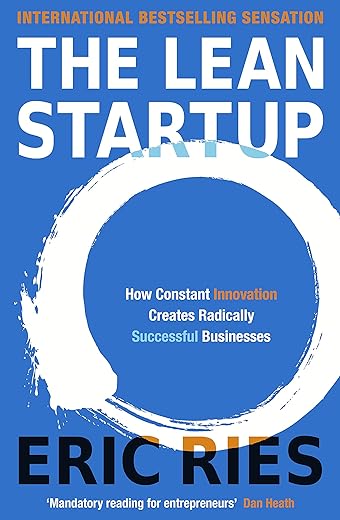
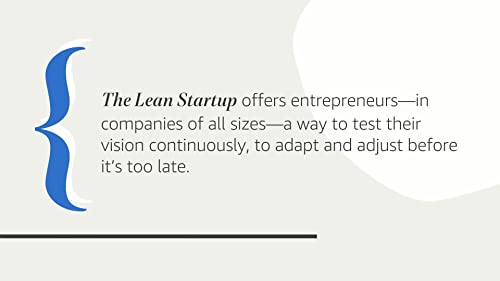
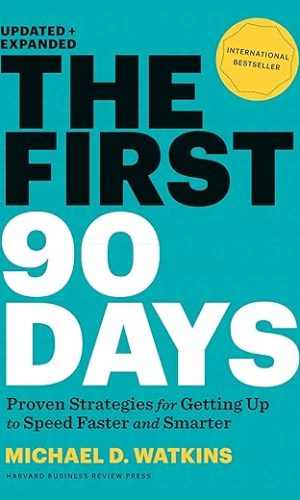
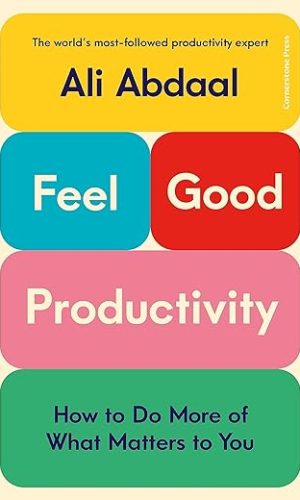



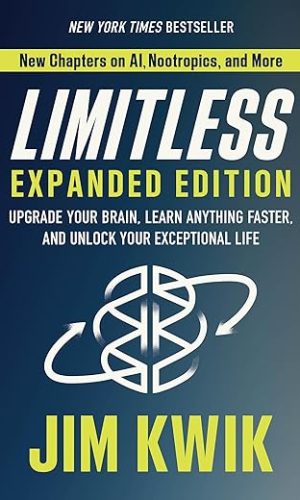
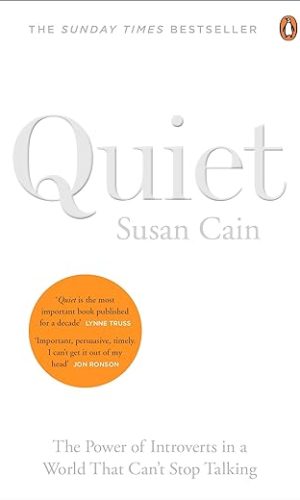

by Athan
I’m a second time entrepreneur, but by Eric Ries’ analysis I’m actually a third time entrepreneur, because he counts the time I set something up as a consultant for a large corporation. So he had me at hello, even if it was through flattery.
In fewer than 300 pages it gave me a good 15 flashbacks. Points where I was shouting out loud “exactly!”
Embarrassingly, it also gave me a whole bunch of moments where I said “why did nobody tell me that back then.”
It’s a MUST if you are starting a business.
It’s not without its faults. It’s an advertisement for his consultancy, it could do without the references to Toyota (of which there’s tons), it really reads like one of those self-help guides obese people read on airplanes; it’s far from perfect.
It is regardless AWESOME and it’s a very quick read.
Look away now if you don’t want me to spoil it for you, here come the main points:
1. Entrepreneurship can happen in funny places.
2. Value = providing benefit to the customer. “Success is not delivering a feature; success is learning how to solve a customer’s problem.”
3. Launch! You’re not going to increase the value of the product without real customer input
4. Launch! You could be perfecting a product of no value
5. Launch! You WILL throw a lot of work away; the earlier you launch the less you’ll throw away
6. For all the above reasons, keep going through short cycles of BUILD, MEASURE, LEARN
7. Plan to learn; don’t say “I learned” as an excuse after a failure if you did not have a lesson planned in there.
8. There is a problem with launching: Once you’ve launched you give up on the “audacity of zero.” In plain English, you start collecting micro amounts. Vis a vis the naysayers, you were better off collecting zero and talking billions. Nobody said it would be easy…
9. Every venture has a value hypothesis and a growth hypothesis
10. Value hypothesis: your guess about why people will want this product
a. Do consumers recognize they have a need you are trying to address?
b. Would they pay money for it?
c. Would they buy it from you?
d. Can you build it?
11. Growth hypothesis: your guess about how you will add customers / sales
12. Design proper experiments to test the two hypotheses. A/B experiments, whatever
13. The Lean Startup recipe is
a. Get a Minimum Viable Product out
b. Go through Build, Measure, Learn loops / experiments to test the two hypotheses and keep improving the product
c. Be happy to reject a few MVPs until you hit upon a good one
14. The MVP won’t be perfect, by definition, but
a. Early adopters won’t mind
b. Let customers decide it’s bad; they might love it (like IMVU’s jumping avatars)
c. You can be creative about showing how it works: e.g. do a video
d. You could do it mechanically, without the tech (concierge) for just a few users
15. Innovation Accounting consists of
a. Establish a baseline: test your riskiest assumption via an MVP or an experiment or even a poll of your customers
b. Tune the Engine: With the baseline secured, make the product better by picking good metrics that are relevant to your value hypothesis and your growth hypothesis and running Build, Measure, Learn loops to get the metrics to improve
c. Pivot or Persevere: Every once in a while, decide if you’re doing well or if you need to Pivot
16. Vanity Metrics won’t get you anywhere. Be careful what you measure. Don’t look at aggregates, look at cohorts or split tests, for example. Use metrics that are relevant to your model. So if the model is viral, measure how many customers every customer brings. Not how your overall number of customers is growing (just because you paid for advertising, for example)
17. The three A’s of Metrics are Actionable, Accessible and Auditable. That’s how you get everybody on board. Don’t bother measuring if others can’t verify your work, if it will be very onerous to measure and if you have not agreed upfront what to do with the numbers. Additionally, “metrics are people too.” If they’re not, make it that way. Make them relevant to the customer.
18. Your engineers need to work as a team. They must work toward testing and delivering product for the customer. Not toward completing projects that get stuck because there is a bottleneck in testing, for example.
19. A startup’s runway is the number of pivots it can make.
Money buys you the opportunity to make a fundamental change (or two) in your business strategy, but saving money without executing a pivot will just mean you die late.
20. Schedule a regular “pivot or persevere” meeting where both product development and business leadership teams attend. Maybe even outside advisors.
21. A catalog of pivots:
a. Zoom-in Pivot
b. Zoom-out Pivot
c. Customer Segment Pivot
d. Customer Need Pivot (e.g. bookings vs. cheap deals)
e. Platform Pivot (e.g. client vs. hosted)
f. Business Architecture Pivot (e.g. B2C to B2B, high-margin to high-volume)
g. Value Capture Pivot
h. Engine of Growth Pivot
i. Channel Pivot
j. Technology Pivot
22. Small Batches are individually more costly, but if you account for everything Large Batches can have very large costs too and you don’t find about them until it’s too late.
23. Small Batches allow the market to pull you in the right direction.
24. New Customers come from old customers in 4 ways
a. Word of mouth
b. As a side effect of product usage (can I Paypal you the money?)
c. Through funded advertising (take proceeds from custy X, buy ads to attract custy y)
d. Through repeat purchase or use (cable TV, not wedding planning)
25. There are three Engines of Growth. Find which one your business depends on and measure how it’s doing. And yes, more than one could be at work, but focus on the more important one.
a. The Sticky Engine of Growth: measure customer acquisition rate + measure churn rate; measure them separately, or you might not see anything!
b. The Viral Engine of Growth: measure if each customer brings > 1 customer through the door. Don’t despair if it’s 0.9, you’re close, experiment your way to pushing it above 1, but if it’s 0.3 you don’t have that growth model.
c. The Paid Engine of Growth: measure what each customer will spend and measure your acquisition costs.
26. A time comes when you run out of early adopters. Don’t wait until then to make the product that the public at large wants. Moving to a higher quality product will slow you down, but you have no choice. And it will in the long term actually speed you up. The earlier you can afford to go high-quality the better.
27. Use the Five Whys as a guide to improving your quality. Get to the bottom of every complaint / problem by behaving like a 4 year old and responding to the answer to your question “why” with another “why” four more times. You will find that in the end you always end up with a person! Not with a process, not with an inanimate object.
28. Have everybody in the meeting when you do the Five Whys. Otherwise those absent will be blamed.
29. When you find the culprit, take the blame yourself for having designed the wrong process. Save your wrath for when the mistake is repeated.
30. Don’t send your baggage through the Five Whys project. Only use them for problems that arose after you instituted the policy.
31. If you are innovating inside a corporation, it is your job to protect the corporation. Otherwise others will make it their job to thwart you.
by G. Brougham
Ries pitches the lean startup as a principled based approach to product development. At one level what is being advocated is nothing more than a modified Deming’s PDCA cycle and the exploitation of the feedback loop, as outlining in Deming’s page 4 diagram from Out of the Crisis, via small batch sizes. The book is much more than this as he has operationalise these approaches.
The modified Deming cycle of build-measure-learn is supported by validated learning and the use of actionable metrics to support decision making. Validated learning reflects Senge idea of organisational learning and actionable metrics are not vanity metrics, such as utilisation, but ones that have implications for the bottom line.
Validated learning makes use of quick iterations to support learning. The learning comes from use using A/B testing to validate hypothesis based on a customer archetypical. This means that idea can be tried out very quickly to see of the original ideas have any value. uSwitch are using this method in the UK and have been very successful with test being run daily.
Accountable metrics ensure that you are focusing on the right metrics and tuning the engine of growth. If you are not then this may lead to pivoting which he refers as repurposing. This has an echo of purposeful systems and Ackoff in which both means and the ends can be chosen. We do this by establish a baseline and measure progress towards the ideal. Periodically we need to validate the progress that we are making and either pivot or preserve.
The baseline is based on minimum viable product (there is a section on what constitutes a minimum viable product in the book but it is similar in to Denne’s Minimum Marketable Feature). The ideal is the numbers in the business case which may be conversion rate, the total number of customer or revenue. Too often people plan the plan and then execute the plan only to find when the funds or time run out that premise was flawed. The use of small batches and the ability to get customer feed promptly means that we can make good decisions and have the time to take action.
What I also like are counter intuitive statements and there are a few in this book. I particularly like the points that he makes about the organisation needing to be protected from the start-up groups. Normally people talk about the group undertaking innovation being protected from the organisation but Ries points out that this does lead to repeatable innovation and gives IBM’s creation of the PC as an example. I also like that he recognised that the approach is declarative in nature as it a framework and not prescriptive or a blueprint.
There is a lot to recommend this book and I’m sure you will get something out of the time invested in reading it
by Tobiloba Ogundiyan
Valuable book to unlock creativity ,and productivity in business would recommend for any software dev,business enthusiast and entrepreneurs .. .